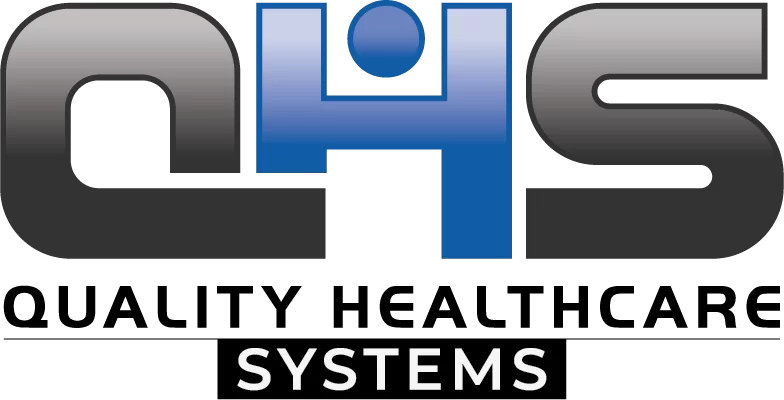Billing for pediatric prosthetic devices is a complex, high-stakes process that requires deep knowledge of payer policies, precise documentation, and specialized coding strategies. From navigating prior authorizations to handling custom prosthetic designs, providers face numerous hurdles that can delay care and reduce reimbursements.
In this guide, we break down the top 20 billing challenges for pediatric prosthetics—each framed as a question—and show how Quality Healthcare Systems (QHS) helps providers overcome them.
Whether you’re a prosthetist, DME provider, or billing team leader, this resource will help you streamline billing, reduce denials, and ensure that young patients receive timely, uninterrupted care.
Common Pediatric Prosthetic Devices and Billing Codes
| Device Type | Billing Notes (HCPCS/Coding) |
|---|---|
| Pediatric Below-Knee Prosthesis (Transtibial) | L5700–L5780, L5620, modifiers for custom fit |
| Pediatric Above-Knee Prosthesis (Transfemoral) | L5610, L5631, L5822–L5828 |
| Pediatric Foot (e.g., SACH or Dynamic Response) | L5970 (SACH), L5980–L5987 (dynamic feet) |
| Pediatric Upper Limb Prosthesis – Passive | L6000, L6020 |
| Pediatric Upper Limb Prosthesis – Body-Powered | L6100–L6180 |
| Pediatric Myoelectric Hand | L6925, L6935, L6880 |
| Activity-Specific Prosthetics (e.g., Sports limbs) | L5999 (miscellaneous/custom), documentation required |
| Pediatric Prosthetic Liners | L5673–L5679 |
| Pediatric Suspension Systems | L5671, L5672 |
| Pediatric Growth-Adjustment Components | L5999 (use with supporting documentation) |
| Pediatric Knee Joints | L5810–L5845 |
| Pediatric Terminal Devices (hooks, hands, tools) | L7007–L7499 depending on function |
How do frequent growth changes in children affect the billing cycle for prosthetic devices?
Children outgrow prosthetic devices quickly, leading to frequent replacements. This results in recurring billing challenges, including repeated authorizations, documentation updates, and reimbursement delays. Payers often question medical necessity, making timely approvals difficult.
Quality Healthcare Systems (QHS) understands that pediatric patients require frequent prosthetic replacements due to natural growth. Our billing experts proactively manage timelines, anticipate payer requirements, and streamline the resubmission process. By maintaining updated medical necessity documentation and tracking each child’s growth schedule, QHS ensures faster claim approvals and reduces reimbursement delays.
What are the challenges in obtaining insurance approval for multiple prosthetic fittings as a child grows?
Insurance companies may limit the number of prosthetic fittings covered per year. Pediatric patients often need multiple fittings due to growth or comfort adjustments, causing approval delays and denial risks without precise medical justification.
QHS specializes in securing approvals for recurring prosthetic fittings by submitting detailed justifications aligned with payer guidelines. Our team collaborates with physicians to document growth-related medical necessity and communicates directly with insurers to expedite approvals. With QHS, practices reduce denials and children receive timely prosthetic care without billing bottlenecks.
How do insurers typically handle requests for early replacements due to wear and tear in active children?
Insurers may deny early prosthetic replacement claims, labeling them as avoidable wear and tear. Justifying replacements for active pediatric patients often requires thorough documentation and proof of functional necessity.
At QHS, we help providers build strong, evidence-based cases for early replacements. By including activity-level documentation, therapy notes, and usage reports, we demonstrate functional need clearly. Our billing specialists are trained to frame replacement requests in insurer-approved language, improving approval rates for active children’s prosthetic needs.
What difficulties arise when justifying the medical necessity of advanced or specialized pediatric prosthetics?
Payers often view advanced pediatric prosthetics as optional or non-essential, requiring extensive documentation to prove medical necessity. Without clear justification, claims for high-tech or specialized devices face denials.
QHS bridges the gap between innovation and coverage. We help practices justify specialized devices with in-depth clinical documentation, therapy goals, and functional assessments. Our team is skilled in translating complex medical needs into payer-friendly formats, ensuring insurers recognize the critical value of advanced pediatric prosthetic solutions.
Are there specific documentation requirements for pediatric prosthetics that differ from adult cases?
Yes, pediatric prosthetic billing often requires additional documentation, including growth projections, developmental milestones, and therapy notes. This added complexity can lead to denials if requirements aren’t fully met.
Quality Healthcare Systems ensures every pediatric prosthetic claim includes age-specific documentation. Our team works with providers to compile growth charts, therapy outcomes, and parental consent forms when needed. By customizing submissions for pediatric requirements, QHS maximizes reimbursement success and minimizes claim rejections from incomplete or misaligned documentation.
How do coverage limitations on prosthetics vary across private insurers and Medicaid for pediatric patients?
Coverage limits for pediatric prosthetics vary widely between private insurers and Medicaid. While Medicaid may allow more frequent replacements, private plans often impose strict caps, requiring detailed appeals and medical justifications to exceed limits.
QHS navigates plan-specific prosthetic coverage policies with precision. Our billing team evaluates each payer’s guidelines—whether Medicaid or private insurance—and customizes claims accordingly. We prepare strong appeals and leverage documented clinical needs to overcome policy limits, ensuring children get the prosthetic care they need despite restrictive coverage terms.
What are the reimbursement challenges when billing for modular or adjustable pediatric prosthetic systems?
Modular and adjustable pediatric prosthetics improve long-term care but complicate billing. Insurers may not fully reimburse for future-ready components unless their necessity is clearly justified at the time of claim submission.
At QHS, we help providers justify modular prosthetics by tying each feature to documented growth trends and clinical benefits. We ensure proper use of billing codes and modifiers that align with the device’s adaptability. With our support, practices secure higher reimbursements while reducing denials on multi-component prosthetic systems.
How does lack of standardized pediatric prosthetic billing codes impact claim approval?
The absence of pediatric-specific prosthetic billing codes forces providers to use adult or generic codes, leading to claim confusion, mismatched documentation, and frequent denials from insurers.
QHS uses proven crosswalk coding strategies and insurer-preferred code mappings to reduce denials from vague or non-standard pediatric billing codes. Our specialists also provide customized documentation to support off-label or non-specific codes, increasing claim clarity and approval rates for pediatric prosthetic services.
In what ways do delays in prior authorization affect timely access to pediatric prosthetic care?
Prior authorization delays can postpone prosthetic delivery by weeks, especially if insurers require additional documentation or peer reviews. For children, these delays can hinder mobility and developmental progress.
QHS accelerates prior authorization by submitting complete documentation from the outset and tracking every request in real-time. Our dedicated authorization team follows up proactively with insurers, reducing delays and ensuring children receive their prosthetics on time. We streamline care access while maintaining compliance with payer requirements.
What challenges exist in appealing denied claims for pediatric prosthetic devices?
Appealing denied pediatric prosthetic claims involves collecting new evidence, navigating payer policies, and preparing detailed narratives. Appeals often stall due to lack of time, expertise, or missing documentation.
QHS handles appeals with a data-driven approach. We review denial reasons, supplement missing documentation, and craft persuasive appeal letters tailored to each insurer’s standards. Our experience in pediatric prosthetic billing ensures that denied claims are professionally challenged and often overturned—leading to improved revenue and patient care continuity.
How do state Medicaid variations impact the billing process for pediatric prosthetics?
Medicaid coverage for pediatric prosthetics varies by state, with different limits, prior authorization rules, and documentation standards. These inconsistencies make multi-state billing complex and error-prone without localized knowledge.
QHS stays current with state-specific Medicaid policies and fee schedules. Our billing experts tailor every pediatric prosthetic claim to meet the exact standards of the child’s state Medicaid program. From documentation to coding, we ensure full compliance—reducing rejections and maximizing approvals for providers operating across different states.
What issues arise in coordinating benefits when a child is covered under multiple insurance plans?
When a child has dual insurance (primary and secondary), billing must follow coordination of benefits (COB) rules. Errors in order of submission or lack of COB documentation can lead to denials and delayed payments.
QHS manages COB complexities by verifying coverage hierarchies before submission. Our billing system ensures that primary and secondary claims are processed in correct sequence with appropriate documentation. We resolve COB conflicts efficiently—helping providers avoid payment delays and ensuring children receive timely prosthetic services.
What are the challenges in billing for custom-designed prosthetics tailored to a child’s unique developmental needs?
Custom pediatric prosthetics often require extensive justification and higher costs. Insurers may challenge the medical necessity or deny claims without detailed clinical reasoning and itemized billing for specialized components.
QHS collaborates closely with clinicians to build bulletproof documentation for custom prosthetics. We highlight developmental goals, therapy plans, and specific design requirements to justify necessity. Our billing experts use detailed coding and modifiers to secure approvals for custom builds—ensuring coverage aligns with each child’s individual needs.
What are the logistical and billing challenges associated with frequent follow-up visits for pediatric prosthetic adjustments?
Children often require multiple prosthetic adjustments due to growth or activity changes. Frequent follow-ups can trigger billing issues, including bundling conflicts, limited visit authorizations, or missed documentation.
QHS tracks each child’s visit history and pre-authorizes follow-ups when required. Our team ensures every visit is billed under the appropriate CPT/HCPCS codes with clear documentation. We help practices avoid bundling errors and secure reimbursement for all necessary pediatric prosthetic care and adjustments.
How do payer audits impact pediatric prosthetic billing for small practices?
Payer audits can strain small practices, especially when pediatric prosthetic claims lack detailed justification. Audits may result in claim clawbacks, fines, or service disruptions if documentation isn’t audit-ready.
QHS prepares every pediatric prosthetic claim as audit-ready from the start. We ensure complete clinical records, coding accuracy, and payer-specific documentation are included. Our audit support team defends claims during reviews, shielding providers from financial loss and helping them maintain compliance without compromising patient care.
How do incorrect HCPCS or CPT codes affect pediatric prosthetic claim approvals?
Incorrect or outdated HCPCS or CPT codes can cause immediate denials or underpayments for pediatric prosthetic claims. Pediatric cases often require precise modifiers and coding combinations to reflect growth-related adjustments and specialized fittings.
QHS ensures coding accuracy with every pediatric prosthetic claim. Our coders stay updated with the latest HCPCS and CPT revisions, especially those impacting pediatric care. We apply proper modifiers and justify usage through thorough documentation, reducing denial risks and ensuring full reimbursement for all provided prosthetic services.
What challenges do providers face when billing for both initial prosthetic fitting and subsequent adjustments in pediatrics?
Insurers often bundle initial fittings and follow-up adjustments, leading to denied payments for services perceived as already covered. Pediatric patients, however, require multiple visits due to rapid growth or fit issues.
QHS separates billing for initial fittings and follow-ups using the correct unbundling strategies and modifier usage. We document the medical necessity of each adjustment and submit claims that comply with payer rules. Our approach ensures providers receive proper reimbursement for every pediatric prosthetic service rendered over time.
Related Posts:
- Medical Billing for Artificial Limbs
- Medical Billing for Orthopedic Support
- Medical Billing for Hemipelvectomy Prosthetic
- Medical Billing for Spinal Orthoses
- Prosthetic Billing for Lower Limbs
Are there unique prior authorization hurdles for high-activity pediatric prosthetic limbs?
Yes, insurers may question the necessity of high-performance pediatric limbs, especially for sports or active use. Prior authorizations often require activity logs, therapy notes, and medical rationale to justify such specialized devices.
QHS helps providers secure authorizations for high-activity limbs by compiling activity-level evidence, therapy recommendations, and physician narratives. Our team submits robust prior auth packages tailored to insurer requirements. With QHS, providers increase their approval chances for advanced pediatric prosthetic solutions designed for highly active children.
What documentation errors most commonly lead to pediatric prosthetic claim denials?
Missing therapy notes, incomplete growth tracking, or lack of physician justification are leading causes of pediatric prosthetic claim denials. Even minor documentation gaps can trigger full claim rejections from payers.
QHS conducts a thorough documentation review before claim submission. We identify and fill in missing data such as therapy notes, growth projections, and clinical justifications. By ensuring every pediatric prosthetic claim meets payer criteria, QHS reduces denials and speeds up the reimbursement process for small and large practices alike.
How do billing errors affect continuity of care for pediatric prosthetic patients?
Billing errors can delay prosthetic delivery, interrupt follow-up care, or result in coverage lapses. For children, these disruptions affect mobility, therapy, and overall development, making accurate billing critical to consistent care.
QHS eliminates billing interruptions through a streamlined, error-proof claim workflow. Our team double-checks coding, documentation, and authorization before submission to ensure smooth payer approval. With QHS managing pediatric prosthetic billing, providers maintain care continuity—and children receive the devices they need without unnecessary delays.






